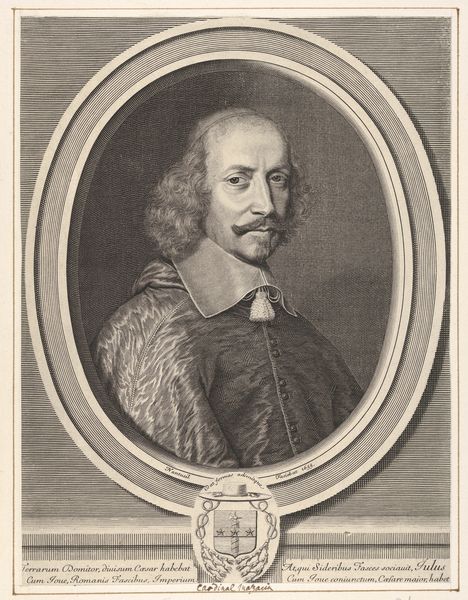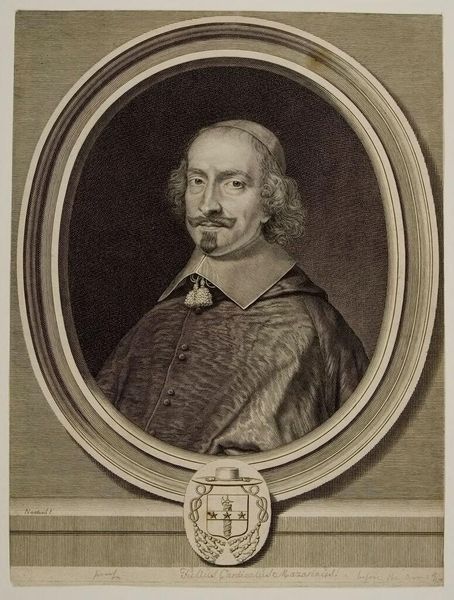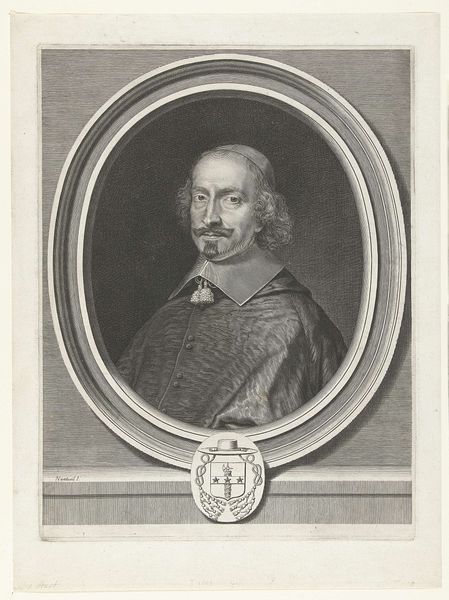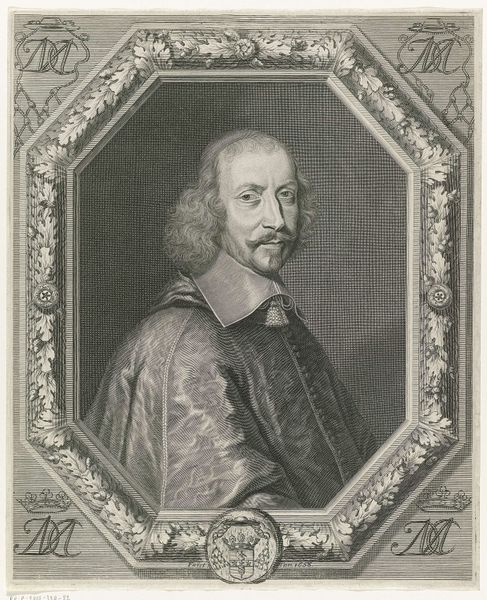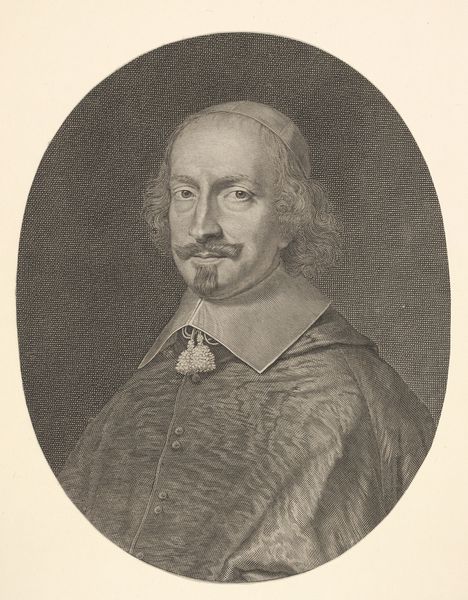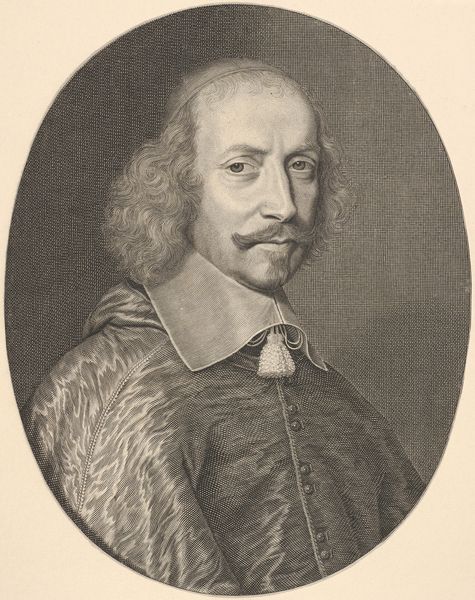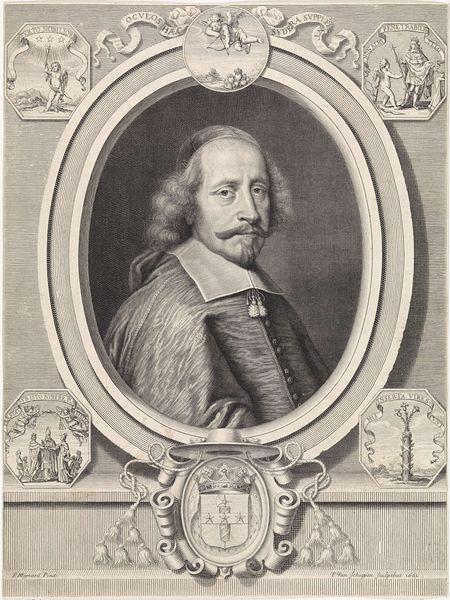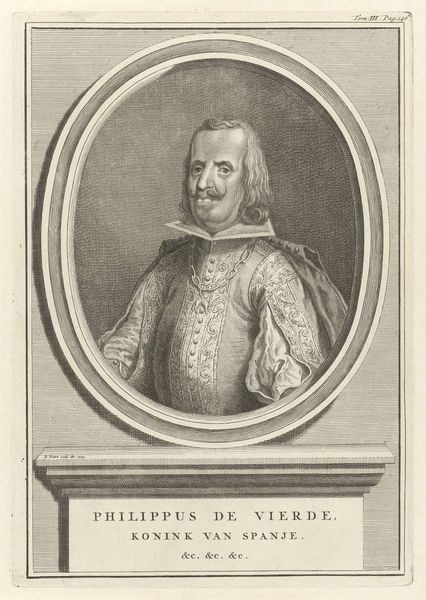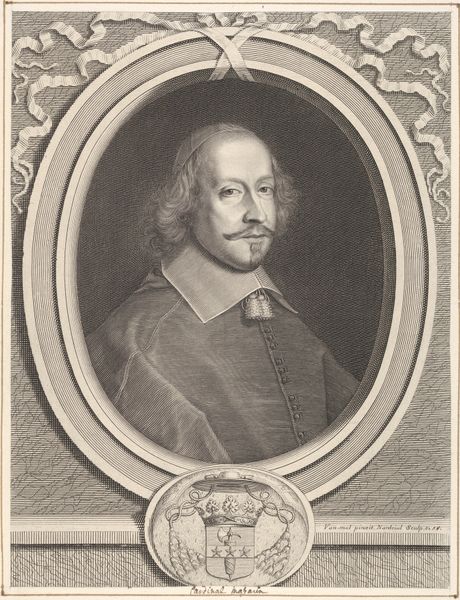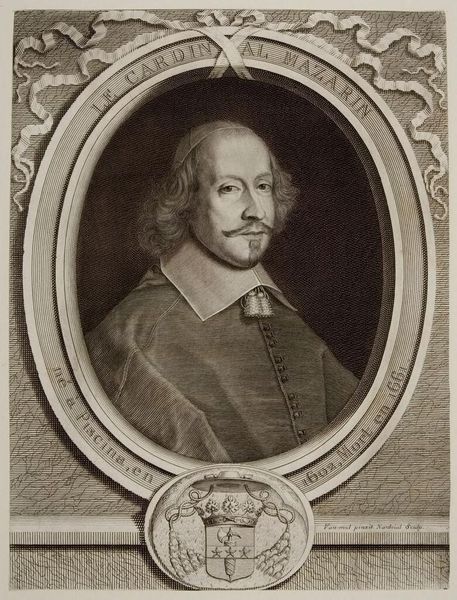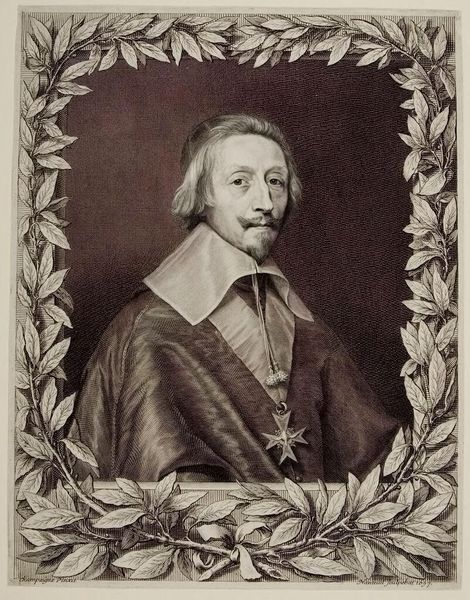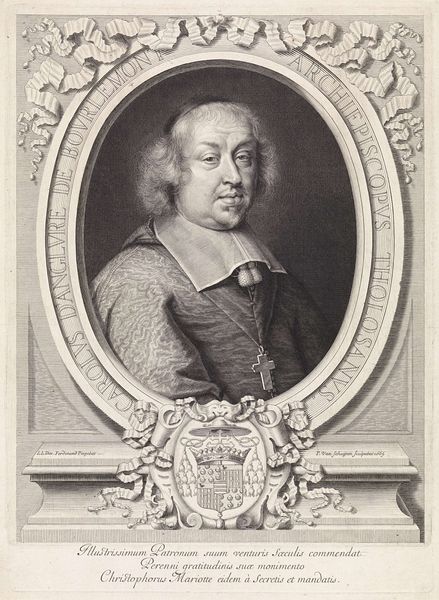
engraving
#
portrait
#
baroque
#
line
#
history-painting
#
engraving
Dimensions: height 265 mm, width 179 mm
Copyright: Rijks Museum: Open Domain
Editor: Here we have a 1729 engraving by Bernard Picart: *Portret van kardinaal Jules Mazarin, bisschop van Metz*. The detail achieved through the lines is amazing. How do we consider the legacy of portraits like this today? Curator: Portraits like this were instruments of power. They circulated images of important figures throughout society, solidifying their influence and projecting an image of authority. This image of Mazarin, for instance, disseminated his image beyond the French court, reinforcing his position as a political and religious leader. How do you think this engraving differs from painted portraits of the time, in terms of accessibility and impact? Editor: Well, engravings are reproducible, so it feels inherently more democratic. Paintings were unique objects only accessible to the elite. But what kind of impact did this actually have on everyday people? Curator: It’s not necessarily about ‘democracy’ in our modern sense. These images often served a didactic purpose, presenting a certain ideal of leadership. They were part of a larger system where even the controlled circulation of imagery was politically charged. Think about who commissioned and controlled these engravings, and to whom they would likely be distributed. The masses wouldn't necessarily have access, so was it actually promoting a certain political image to other elites? Editor: So even in its accessibility, the portrait is reinforcing hierarchies and power structures. I never considered that! Curator: Precisely. It invites us to analyze not just the image itself, but also the social context surrounding its production and dissemination. What this work emphasizes for me is to study how images shape our understanding of historical figures, especially within the politics of representation. Editor: I definitely have a new appreciation for understanding the role of images in the past – how they not only reflect but also construct history. Curator: Agreed. Recognizing the intersection between art and power gives us essential critical tools for navigating our image-saturated world today.
Comments
No comments
Be the first to comment and join the conversation on the ultimate creative platform.
